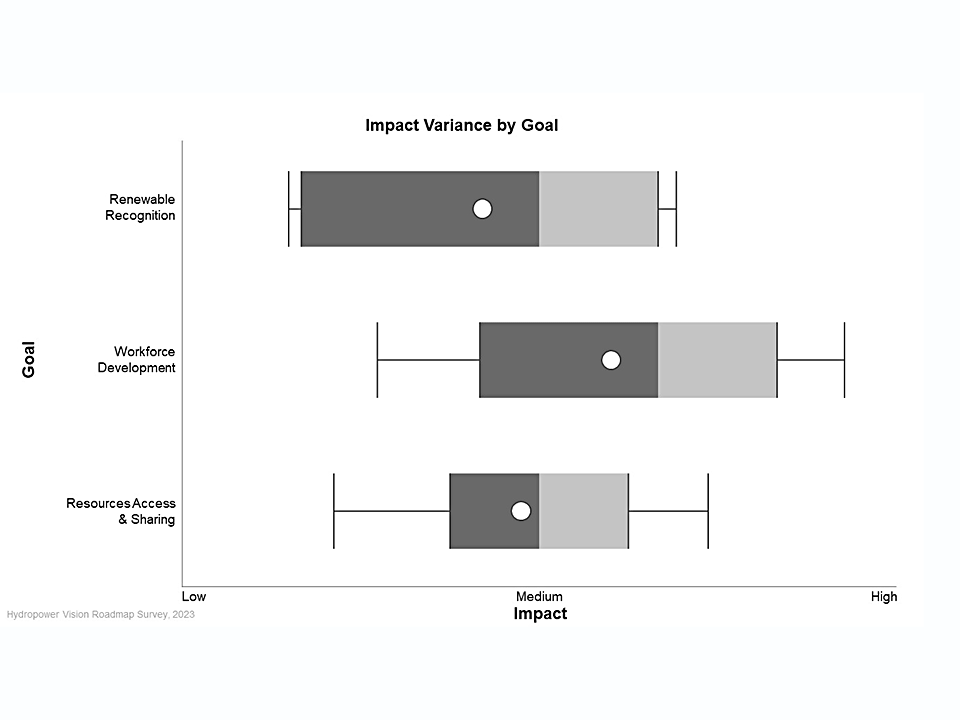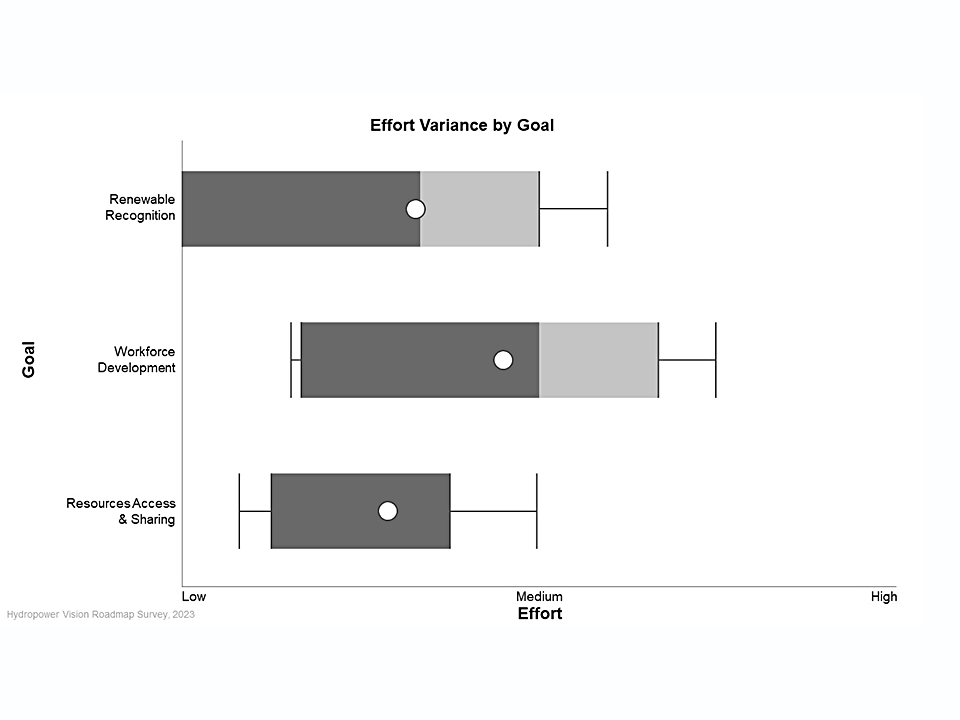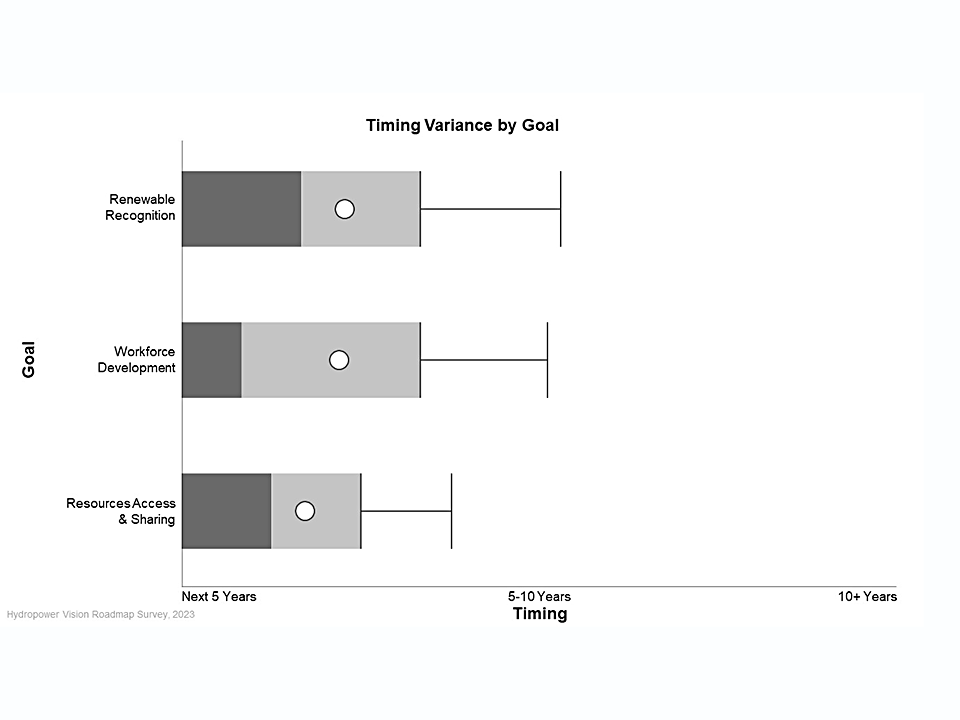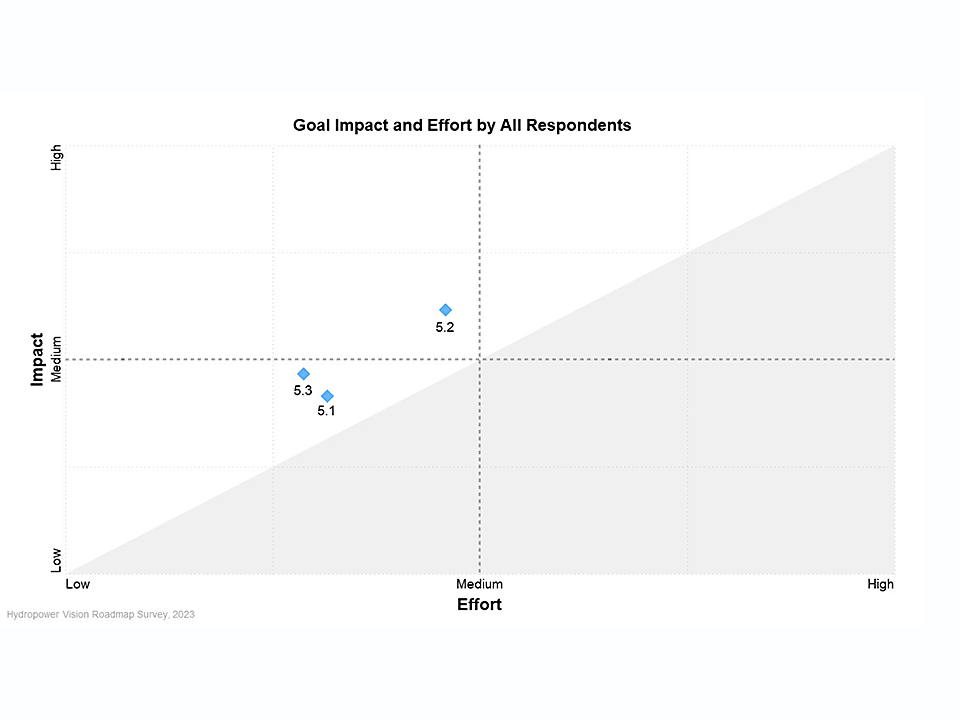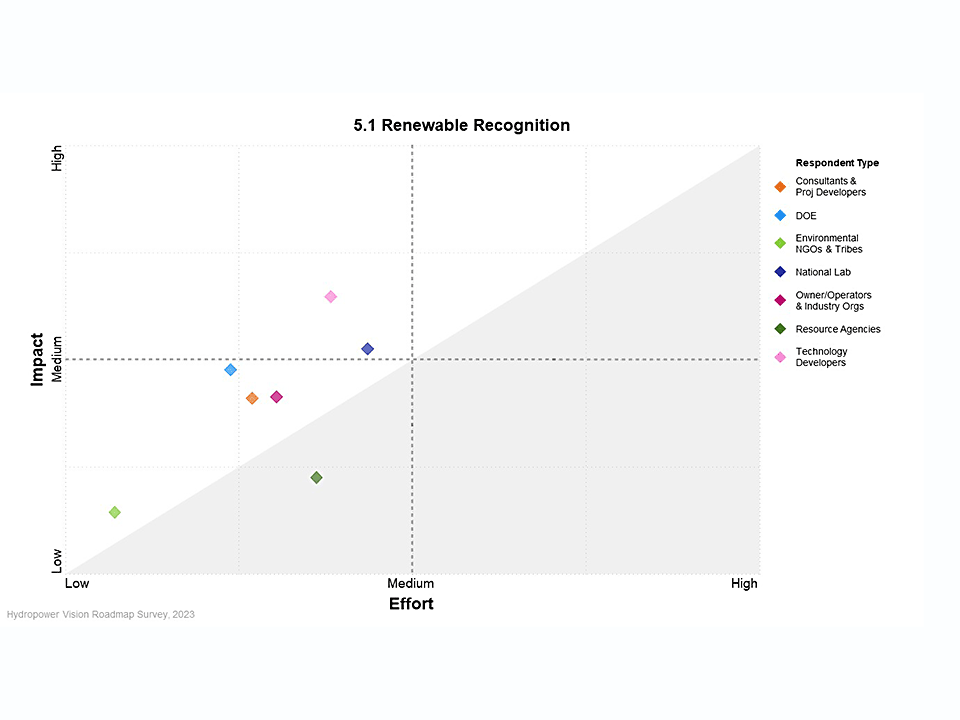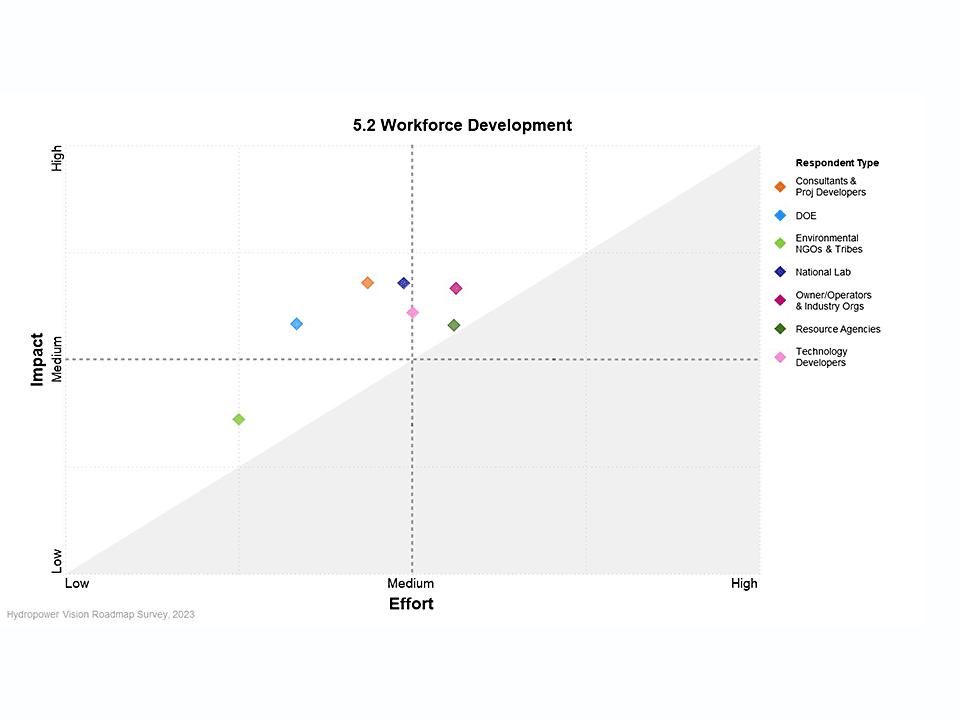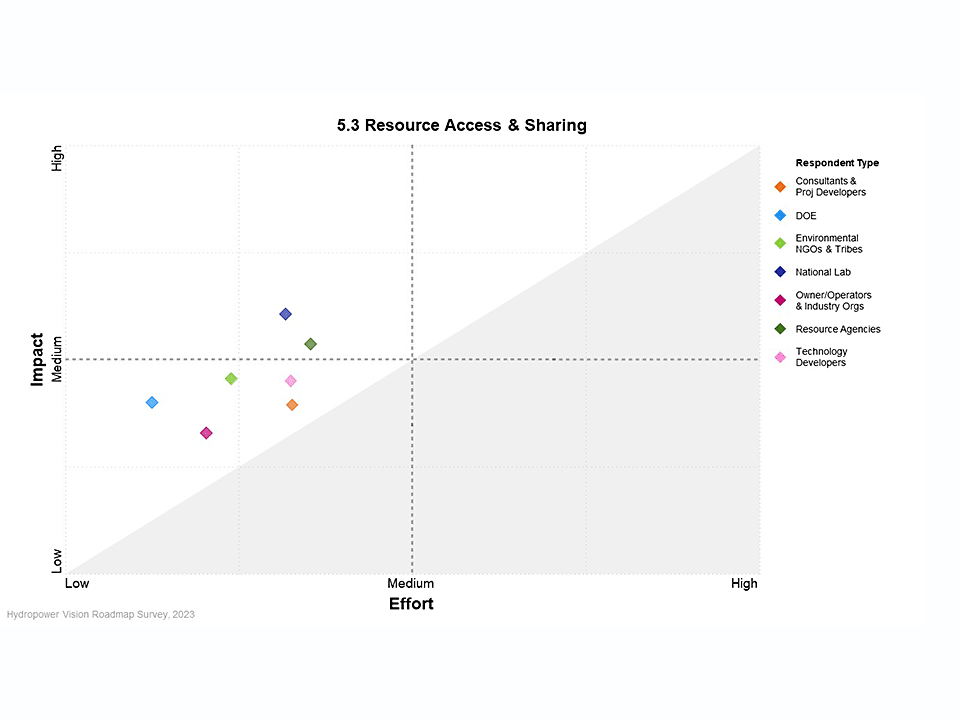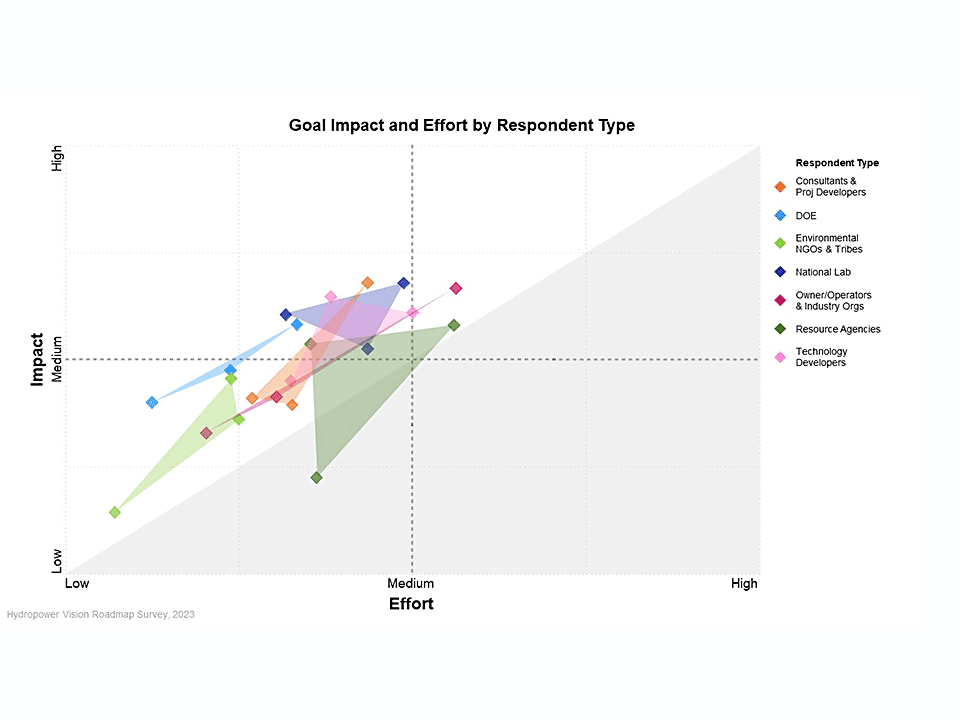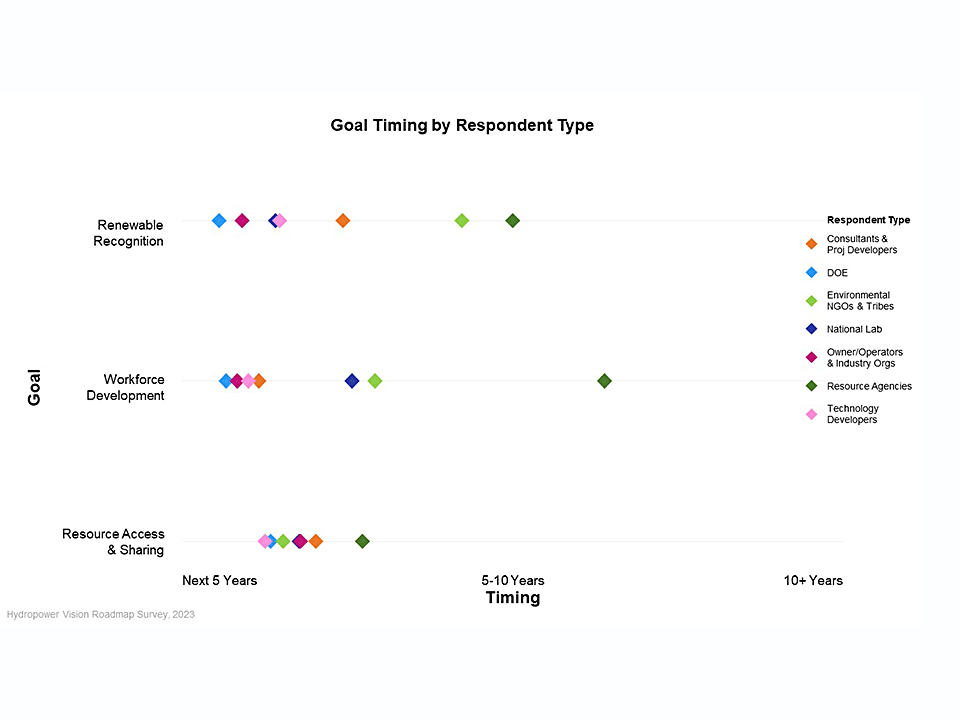 The hydropower community is a complex network of individuals and groups with unique interests, perspectives, and operational missions. To ensure a sustainable future for hydropower and the other renewable energy sources it enables, the hydropower community needs to enhance and diversify collaboration efforts within and beyond its existing networks. The Enhanced Collaboration, Education, and Outreach area builds capacity to access, engage, and create community networks and resources that sustain public welfare, environmental stewardship, and renewable energy integration. The scope of this area includes hydropower community-wide communication and relationships with external entities.
The hydropower community is a complex network of individuals and groups with unique interests, perspectives, and operational missions. To ensure a sustainable future for hydropower and the other renewable energy sources it enables, the hydropower community needs to enhance and diversify collaboration efforts within and beyond its existing networks. The Enhanced Collaboration, Education, and Outreach area builds capacity to access, engage, and create community networks and resources that sustain public welfare, environmental stewardship, and renewable energy integration. The scope of this area includes hydropower community-wide communication and relationships with external entities.
While collaboration supports every area in the Hydropower Vision Roadmap, visionaries identified three goals critical to sustaining hydropower through 2050:
- 5.1 Renewable Recognition
- 5.2 Workforce Development
- 5.3 Resource Access and Sharing
The first goal considers current and future engagements needed to communicate the value of hydropower in the broader renewable energy landscape. The second goal focuses on capacity building and ensures the education, training, and networks needed to support industry goals are diverse and accessible. The third goal focuses on existing hydropower community members and identifies opportunities to enhance their access to existing engagements and resources used for decision-making.
Forum members have drawn upon their collective experience and expertise to identify activities that will help achieve each of these goals. Similar suggestions were combined and, if necessary, moved to the area and goal where impact and alignment were greatest. This approach generated a set of activities that can direct collaboration, strategic planning, and progress tracking efforts across the hydropower community without creating silos of effort.
Goals & Activities
- Goal 5.1 Renewable Recognition – Hydropower is recognized as a renewable energy resource that enables the energy transition.
Activity 5.1.1 – Engage with the broader renewable energy community at multiple scales.
While hydropower is a reliable source of renewable energy that enables variable renewable energy systems, such as solar and wind, there is little recognition of this outside the hydropower community. Defining the role of hydropower in the clean energy future requires increased engagement with networks and events focused on the broader energy system, including renewable energy conferences.
Activity 5.1.2 – Use diverse platforms and creative methods to engage within and outside the hydropower community.
Expanding engagement within and beyond the hydropower community requires new and existing approaches that are not only inclusive and accessible but also immersive. Digital and hybrid platforms, as well as in-person engagement, are collectively needed to reach audiences and build an informed and empowered community.
Activity 5.1.3 – Track the impact and outcomes of engagement methods and messaging.
The efficacy and impact of communication and engagement methods are not often assessed, but doing so presents an opportunity to test assumptions, adapt approaches, and improve future efforts to engage specific audiences. Different approaches, such as social media and web tracking, outreach, and research, can be used to ensure engagement intentions and that audience needs are met.
- Goal 5.2 Workforce Development – The workforce is diverse and well-trained to meet industry needs.
Activity 5.2.1 – Integrate hydropower as a renewable energy resource into new and existing career education and national science programs for all ages.
Existing education and science programs address many social and environmental topics that are related to hydropower. Connecting new and existing programs with hydropower is essential to understand the relationship and role of hydropower in our landscape and will help prepare the future workforce to consider the variety of career opportunities within the hydropower community.
Activity 5.2.2 – Create, leverage, and support hydropower training and mentoring programs that provide exposure to multiple facets of the hydropower industry.
From technology development to resource management, there are many opportunities to gain experience from those working within the hydropower community. Leveraging existing programs and creating new ones will provide multiple avenues for workforce inspiration and aspiration.
Activity 5.2.3 – Increase access to hydropower educational opportunities by offering training and mentoring through multiple venues.
Training and mentoring can be offered through a variety of entities and platforms, from training programs offered by trade schools, universities, and industry to online learning platforms and communities. Different venues ensure those interested in pursuing a future with hydropower have access to diverse learning opportunities and experiences.
- Goal 5.3 Resource Access and Sharing – The data and research needed for decision-making is accessible.
Activity 5.3.1 – Increase access to hydropower community engagements and resources through virtual and in-person options.
Hydropower community engagements and resources should be open to whoever has interest in them. Organizers should not only consider providing multiple options for participation, but also plans and platforms that improve access to resources before and after engagements.
Activity 5.3.2 – Convene regular engagements for the hydropower community to discuss data availability and needs on a range of topics.
The hydropower community would benefit from the ability to engage with a cross-section of stakeholders to identify the data and research needed to make decisions and advance their individual missions. Regular engagement would allow community members to provide updates, track progress, and prioritize different topic areas.
Activity 5.3.3 – Connect the hydropower community with existing best practices and case studies from a variety of focus areas and sources.
There are many best practices and case studies from across the hydropower community, but awareness of and access to them is not a given. Identifying mechanisms to make those connections is critical to inform and improve hydropower research and development.
Activity 5.3.4 – Develop and leverage best practices for establishing, expanding, and maintaining a productive dialogue with stakeholders within and outside the hydropower community.
As the hydropower community identifies and organizes best practices for community engagement, there is a need to understand how such practices can be adapted and applied to sustain dialogue with those already engaged and build dialogue with those traditionally left out of the decision-making process.
Survey Results
The 2023 Roadmap Survey sought to understand hydropower community perceptions of the impact, effort, and timing of Roadmap goals and activities, as well as the sectors that should be involved to ensure progress is made. Scroll through the images below to see the results for Enhanced Collaboration, Education, & Outreach. Results for other areas can be found on their individual pages under the Roadmap menu.
Below are highlights from the survey results that correspond with the images above.
- Impact Variance: Survey respondents ranked Enhanced Collaboration, Education, and Outreach (ECEO) goals as having medium impact, and they ranked the Workforce Development goal higher on average. There was least consensus on the impact of Renewable Recognition with rankings that varied from low to medium-high impact.
- Effort Variance: Respondents ranked ECEO goals as medium-low to medium effort. While they perceived Workforce Development to require the most effort of ECEO goals, there was less consensus on the level of effort required.
- Timing Variance: To have maximum impact, respondents consistently suggested ECEO goals should be completed in the next 5 years.
- Overall Goal Impact and Effort: All ECEO goals were see as more impactful than the effort required to complete them.
- Goal 5.1 Impact and Effort: Unlike other respondents, Resource Agencies ranked Renewable Recognition as more effortful than impactful. While Environmental NGOs and Tribes ranked this goal as higher in impact than effort, both were ranked lower than other respondents.
- Goal 5.2 Impact and Effort: While respondents ranked impact of Workforce Development higher than the effort required, Environmental NGOs and Tribes ranked it significantly lower in impact and effort than other respondents.
- Goal 5.3 Impact and Effort: National Labs and Resource Agencies ranked Resource Access and Sharing higher in impact than other respondents whereas Hydropower Owner/Operators and Industry Organizations ranked it lowest.
- Goal Impact and Effort Spread: On average, respondents ranked each ECEO goal differently with a high spread in impact and effort rankings. Resource Agencies had the largest difference in average impact rankings across goals whereas Hydropower Owner/Operators and Industry Organizations had the largest difference in effort rankings across goals.
- Goal Timing: Most respondents suggested ECEO goals should be completed in the next 5 years with DOE having among the shortest desired timeframes. In contrast, Resource Agencies suggested the longest timeframes for ECEO goals.


